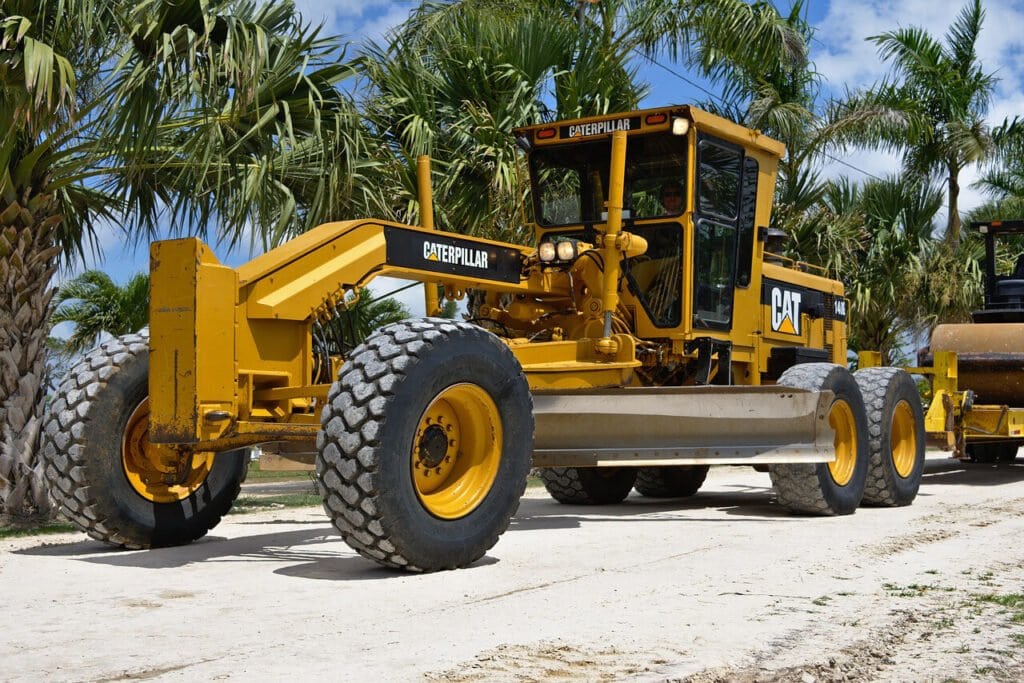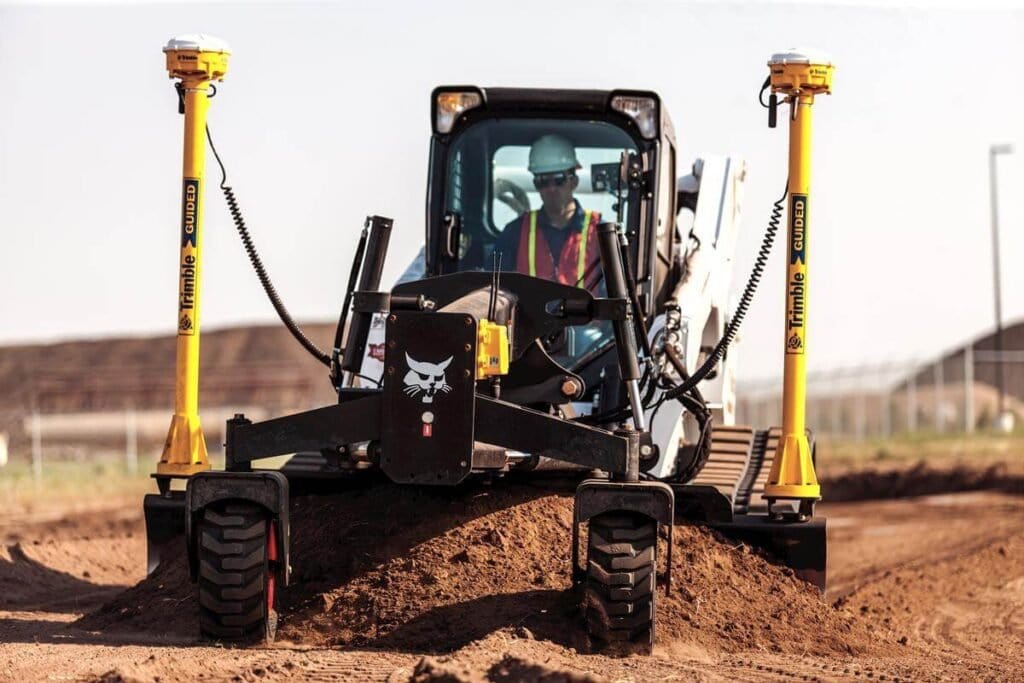When it comes to road construction and large-scale earthmoving projects, selecting the right equipment is critical. However, many people struggle to understand which types of graders will best suit their specific needs, which can lead to inefficiencies, costly mistakes, or project delays.
Imagine using the wrong grader for a job—whether it’s the wrong blade size, lack of traction, or poor maneuverability for rough terrain. This could waste both time and resources, especially if you need precision for creating level surfaces or grading certain areas.
In this article, we will break down the different types of graders in construction, outlining their functions, uses, and the benefits of choosing the right one. By understanding these various types of motor grader, you’ll be equipped to make an informed decision and optimize your project’s efficiency.

1. Types of Graders — Standard Motor Grader
Overview:
The standard motor grader is the most commonly used grading machine in the construction industry. It typically features a long, adjustable blade mounted between the front and rear axles. This blade can be adjusted in multiple directions, allowing the operator to control the depth, angle, and tilt, making it ideal for high-precision grading. The machine is driven by two or four wheels, depending on the model, and can be equipped with a variety of attachments, such as scarifiers for surface preparation and rippers for breaking hard ground.
Uses:
Standard motor graders are crucial for creating smooth, flat surfaces, which are necessary for tasks like road construction, landscaping, и site preparation. These machines are capable of working on highways, urban roads, airstrips, и leveled land for buildings. In addition to leveling surfaces, they are frequently used to shape and contour land, which is important for drainage and water flow. For example, on large-scale road projects, motor graders are used to establish the precise crown of the road, allowing rainwater to flow off the surface and prevent puddling.
Furthermore, these machines can be equipped with special blades that allow them to perform fine grading, which is particularly important when preparing a road for asphalt paving. The precision of a standard motor grader ensures that the base layer for paving is not only level but also has the necessary slope to optimize drainage.

2. Types of Graders — Crawler Grader
Overview:
The crawler grader uses tracked wheels instead of tires, which gives it superior stability and traction, especially when working on soft, unstable, or uneven ground. The tracked design allows the machine to distribute its weight more evenly across a larger area, reducing the risk of sinking or getting stuck in difficult terrain. This makes it a preferred choice for sites where traditional wheeled graders may struggle or be unable to operate effectively.
Uses:
Crawler graders are essential for work in environments with challenging soil conditions, such as swampy land, remote areas, or quarry sites. The low ground pressure created by the tracks allows these graders to work on softer ground without damaging the surface, which is crucial when working on wetlands или agriculture projects that require minimal disruption of the ground. These graders are also used extensively in mining and forestry, where the rough and unpredictable terrain requires equipment that can move effectively across rocky or hilly surfaces.
In road construction, crawler graders can tackle both rough grading (such as clearing large areas or removing debris) and fine grading (for creating smooth, level surfaces). Their ability to work in difficult conditions allows them to maintain productivity even when weather conditions, such as heavy rain or snow, could halt operations for other types of equipment.

3. Types of Graders — Four-Wheel Drive Grader
Overview:
The four-wheel drive (4WD) grader has power distributed to all four wheels, giving it enhanced traction and control. This type of grader is particularly useful in environments where a standard wheeled grader may have trouble maintaining stability. The 4WD configuration allows the grader to handle rough terrain, steep slopes, и loose or slippery ground more effectively.
Uses:
The 4WD grader is especially popular for smaller construction projects that require maneuverability and ease of access in confined or hilly areas. For example, in residential development, where roads are often narrow and grades vary, a 4WD grader can quickly adjust to varying terrain. These graders are also commonly used for maintenance of existing roads and minor grading tasks, as their ability to move over challenging surfaces allows for better precision.
Another key application of the 4WD grader is grading slopes или creating embankments in construction projects. For instance, landfills, land development projects, и water channels often require graders to handle steep inclines or narrow pathways. The all-wheel drive capability ensures that these graders can operate in such conditions without sacrificing efficiency или stability.

4. Types of Graders — All-Wheel Drive Grader
Overview:
The all-wheel drive (AWD) grader is an advanced version of the 4WD grader. This type of grader features the unique ability to distribute power evenly to all wheels, which helps maintain superior traction in even the most challenging conditions. In addition to the power of all-wheel drive, these graders are typically heavier and more durable, allowing them to perform at higher efficiency levels when working on large projects.
Uses:
AWD graders are generally used in large-scale construction projects, such as highway construction, airport runways, и heavy-duty earthmoving operations. Their increased weight provides better stability and helps prevent the grader from slipping on loose or unsteady surfaces. They are also frequently used in agriculture, particularly for irrigation channels and levee construction, where creating precise slopes and angles is critical.
The ability to use AWD on soft, unstable soils, gravel, or compacted earth makes these graders ideal for work on highways that must endure heavy traffic loads. They are commonly employed in major road rehabilitation projects where a high level of performance is required to handle extreme ground conditions and ensure that the final grade is flawless.

5. Types of Graders — Single Tyre Grader
Overview:
The single tyre grader uses large single tires on each axle to provide a lightweight and compact alternative to traditional graders. Despite its smaller size, this grader can perform tasks efficiently on lighter surfaces and requires less maintenance compared to its larger counterparts. The single tire configuration allows for greater mobility and маневренность in smaller work areas.
Uses:
Single tyre graders are best suited for landscaping and small-scale roadwork. They are particularly effective for jobs such as grading driveways, smoothing soil for residential construction, и shaping curbs. Their compact size allows them to fit in tight urban spaces, making them ideal for city infrastructure projects. Additionally, these graders can perform fine grading, which is necessary when the goal is to achieve a precise surface for paving or land leveling.
Single tyre graders can also be used for farm and ranch applications, where agricultural fields need to be leveled or roads need to be maintained. Due to their low operating costs and easy maneuverability, they are also a popular choice for municipal maintenance, where road repairs and minor grading tasks need to be completed efficiently without significant expenditure.

6. Types of Graders — Skid-Steer Grader
Overview:
The skid-steer grader is a smaller, more compact machine that operates with skid-steering. This means that the machine can pivot in place, offering exceptional маневренность in tight spaces. With a smaller body and shorter wheelbase, it can work in areas that traditional graders simply cannot access. These graders are usually equipped with a single blade that can be adjusted for light grading tasks.
Uses:
Skid-steer graders are perfect for small-scale grading tasks such as grading driveways, parking lots, и residential roads. Their compact size allows them to easily navigate confined spaces and tight corners, making them suitable for landscaping projects, tree removal, и garden design. They can also be equipped with scarifiers to break up compacted soil, allowing for more efficient site preparation.
In addition to grading, skid-steer graders can be used for fine grading and land leveling, particularly when working with light soils или loose materials. The ability to easily move between projects and operate in small spaces makes them ideal for urban construction where equipment access is restricted.

7. Types of Graders — Heavy-Duty Motor Grader
Overview:
The heavy-duty motor grader is a larger, more powerful version of the standard motor grader. It is designed to handle larger workloads and more demanding tasks. These graders come equipped with powerful engines, longer reach, и heavier frames, enabling them to tackle even the most challenging construction projects. The heavy-duty grader can be fitted with attachments to further enhance its performance, including heavy-duty blades, multi-purpose attachments, и extended ripper systems.
Uses:
Heavy-duty motor graders are employed in large-scale, high-intensity grading projects such as highway construction, major land development, и mining operations. They are capable of handling rough grading tasks, such as clearing large areas, removing debris, and cutting through dense soils или rocky terrain. These graders are also used in earth-moving operations where precise grading is needed, such as in quarries или oil fields.
Additionally, heavy-duty graders can be used in paving preparation to create smooth surfaces for asphalt or concrete applications. The increased weight and powerful engines ensure that these graders can perform under demanding conditions and meet the requirements of massive infrastructure projects.

8. Types of Graders — Road Broom Grader
Overview:
The road broom grader combines a traditional motor grader with a rotating broom attachment. This attachment is used for sweeping debris and cleaning surfaces. It can be used to clear dirt, dust, or debris from paved surfaces или roadways, leaving behind a clean, clear surface. Road broom graders are equipped with high-power engines and advanced hydraulic systems, making them highly efficient for heavy-duty cleaning tasks.
Uses:
The primary use of a road broom grader is to maintain roadways by removing dust, gravel, dirt, or other loose debris. They are particularly useful in urban areas where cleanliness is essential and traffic must be maintained. Additionally, they are ideal for construction sites, quarry roads, и mining operations, where debris accumulation is common.
They can also be used on paved roads after a storm or heavy rainfall to clear excess gravel или mud. The broom attachment’s ability to rotate allows the grader to cover wide areas quickly, improving the efficiency of road cleaning tasks. Road broom graders are often used alongside other equipment in maintenance projects, providing a high-quality finish to freshly constructed or renovated roads.

Choosing the Right Type of Grader for Your Construction Project
The selection of the right type of grader largely depends on the specific needs of your construction or roadwork project. Whether you’re working on rough terrain, fine grading, or large-scale infrastructure development, understanding the various types of graders in construction will help you make the right choice.
In summary, types of graders such as the standard motor grader, crawler grader, 4WD grader, and AWD grader each offer unique features suited to different construction tasks. Depending on factors like terrain, project scale, and required precision, selecting the right motor grader can significantly improve productivity and reduce operational costs. Whether you’re planning to buy a new or used grader, understanding the function and capability of each machine is key to getting the best results from your equipment.
